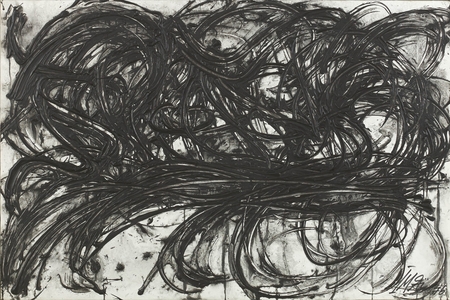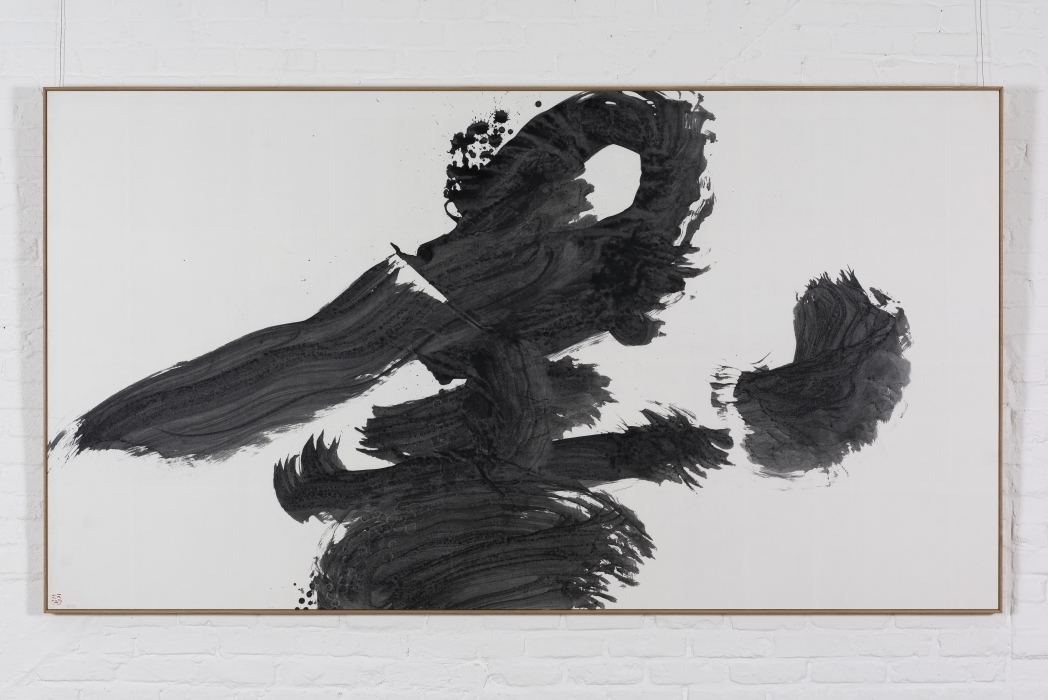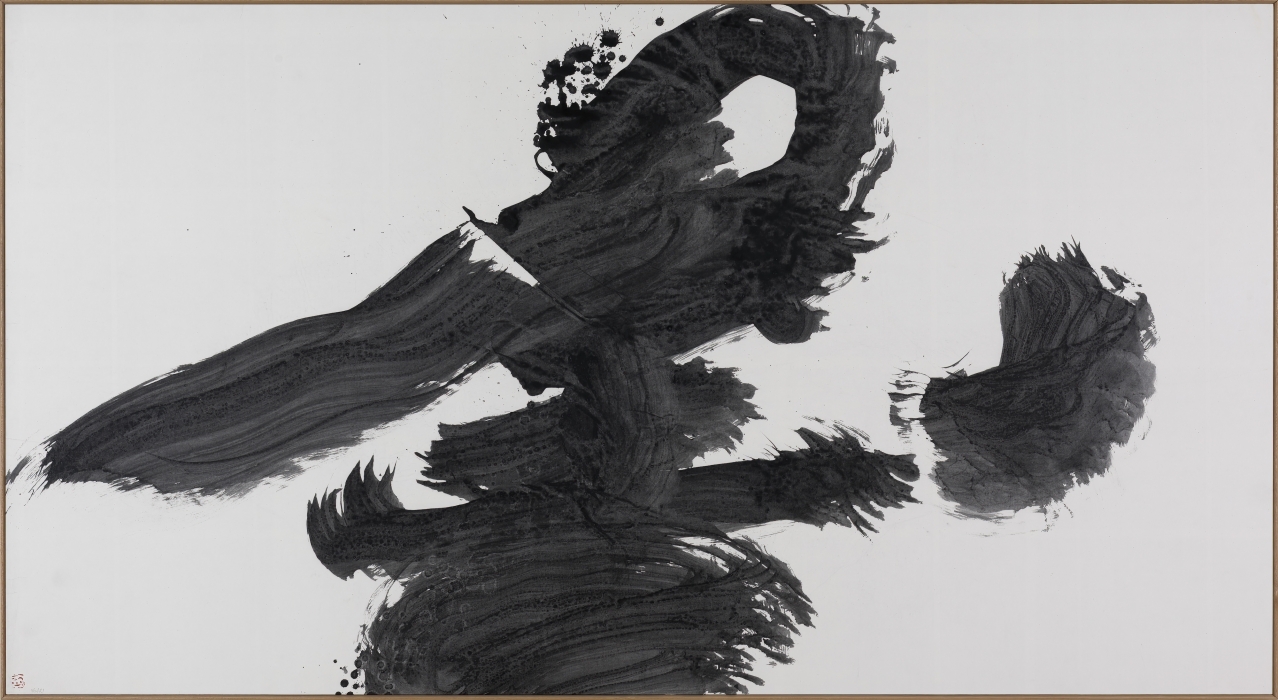Product Description
7655 Toshimitsu Imai (1928-2002)
Untitled
Acrylic on paper mounted on canvas, framed
Signed and dated Imai 76 to lower right
Dimensions: H. 61.5cm x W. 105cm (24¼” x 41½”)
Toshimitsu Imai was born in Kyoto and studied oil painting in Tokyo under Ryuzaburo Umehara (1888-1986) and other Western-style painters. In 1948 his work was awarded at the Salon of Shinseisaku (New Creation Association) and three years later he won a prize for best young artist at the same exhibition.
In 1952 Imai moved to Paris and held his first solo show at the Galerie 25 in December 1953. Whilst in Paris Imai befriended both the American abstract artist Sam Francis (1923-1994) and the French art critic Michel Tapié (1909-1987). These meetings and the dynamic art scene in Paris inspired him and his style moved towards powerful abstraction. He was also in the circle of various other artists including Georges Mathieu (1921-2012), Jean Dubuffet (1901-1985), Jean Fautrier (1898-1964), Paul Jenkins (1923-2012) and Henri Michaux (1899-1984), which led Imai himself to the Art Informel movement.
At the request of the Japanese avant-garde artist Taro Okamoto (1911-1996), Imai contributed to the introduction of Art Informel into Japan, enabling Michel Tapié to show his extensive collection of work from this movement at Exposition Internationale de l’Art Actuel. This travelling exhibition took place in Tokyo, Osaka, Kyoto and Fukuoka from 1956 to 1957. It was one of the largest exhibitions showing Western art movements of the period to be held in Japan during the 1950’s. In particular the Art Informel paintings in this show had a huge impact on Japanese artists at the time, which is known as the “Art Informel Sensation”. Imai also introduced Tapié to the artists of Gutai, arguably the most well-known avant-garde group from Japan today.
His first one-man show at Galerie Stadler in Paris, the leading gallery of Art Informel, in February 1957, was a success and this confirmed Imai as an internationally recognised Art Informel artist. In the 1960s and 1970s he was based both in France and Japan and continued exhibiting at a number of solo and group exhibitions globally, including at the 30th Venice Biennale (1960) and the 7th São Paolo Biennial (1963). His artistic style never stopped its development. In the 1980s he created paintings using gold and silver, referring to the Japanese traditional Rimpa-school painting. In the 1990s his style shifted to Expressionist and then mostly representational works in his final years.
Imai’s sources of inspiration were diverse – although his abstract style can be interpreted as universal and avant-garde, the often thick texture and palette of his works somehow remind us of Japanese traditional art such as calligraphy and ceramics. The artist’s vitality and power throughout his artistic life are visible in the dynamic brushwork in this present work.
Works by the artist can be found in the collections of various museums including: Centre Pompidou, Paris; The National Museum of Modern Art, Tokyo; The National Museum of Modern Art, Osaka; Osaka City Museum of Modern Art; Hyogo Prefectural Museum of Art; The Museum of Modern Art, Shiga; Ohara Museum of Art, Okayama; Aomori Museum of Art.
For similar examples by the artist, see Ichiro Hariu et al., Toshimitsu Imai, (Tokyo, 1975), no. 74, 102-111.








